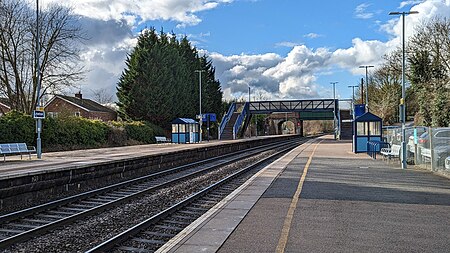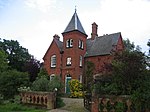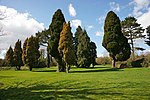Hatton railway station (England)

Hatton railway station takes the name of the village of Hatton in Warwickshire, England, although it is about 1 mile (1.6 km) from the village. It is situated in the linear settlement of the same name (Hatton Station), that evolved around the station, mainly in the 1950s and 1960s. Other close settlements are Little Shrewley and Shrewley. The station is managed by Chiltern Railways. Hatton is the junction station at which the lines from Leamington Spa to Stratford-upon-Avon and Birmingham diverge. The station is unstaffed; ticketing is restricted to a 'Permit-to-Travel' machine located at the single entrance to the station on the London-bound (southbound) platform. There is a small shelter on Platform 1 (southbound - for trains from Birmingham to Leamington Spa) and also one on the island platform, which consists of Platforms 2 and 3 (Platform 2 is for Birmingham-bound services and Platform 3 is for stations from/to Stratford upon Avon, which bear to the west immediately north of the station. Trains can, however, use both Platforms 2 and 3 to reach Birmingham, as just outside the station, the lines re-join). A footbridge links Platform 1 with island Platform 2/3. Each platform at the station is equipped with a real-time electronic information departure screen.
Excerpt from the Wikipedia article Hatton railway station (England) (License: CC BY-SA 3.0, Authors, Images).Hatton railway station (England)
Station Road,
Geographical coordinates (GPS) Address External links Nearby Places Show on map
Geographical coordinates (GPS)
| Latitude | Longitude |
|---|---|
| N 52.2952 ° | E -1.673 ° |
Address
Hatton
Station Road
CV35 7LE , Shrewley
England, United Kingdom
Open on Google Maps









